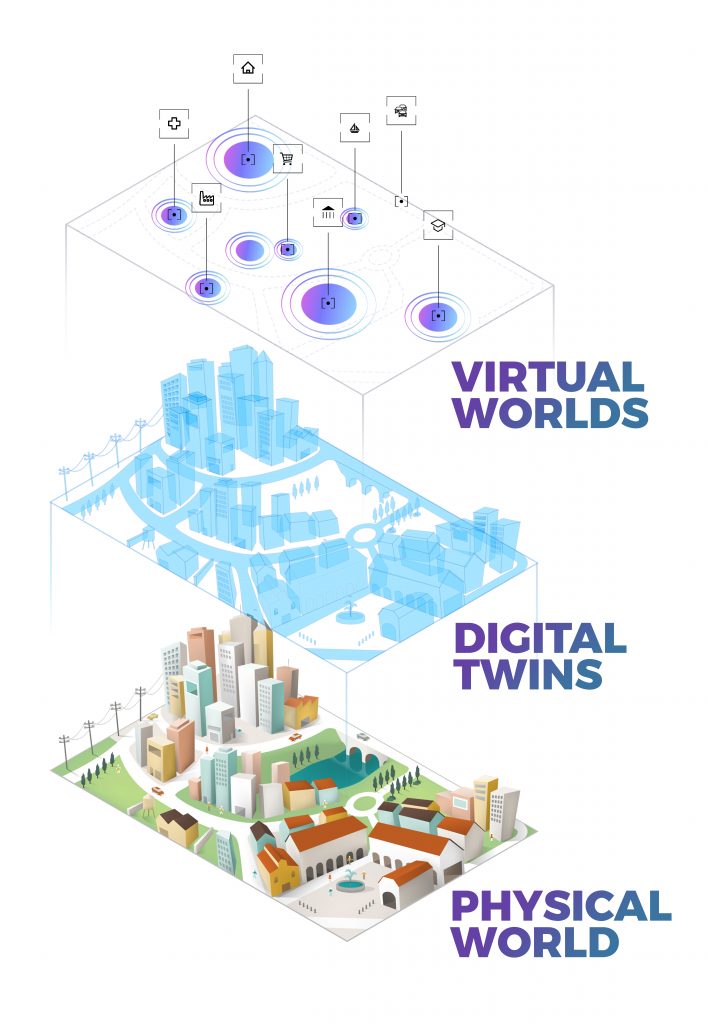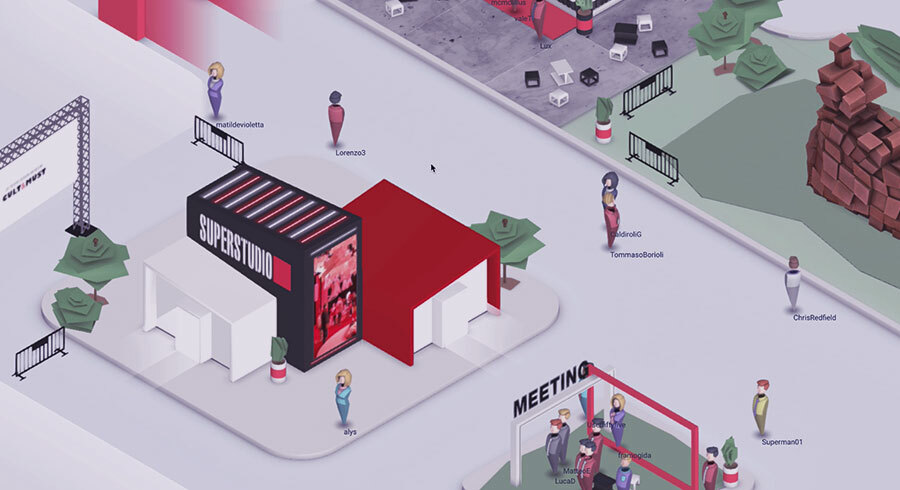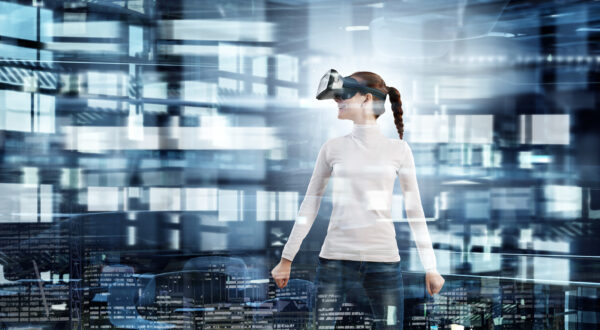The End of the Digital Era and the Birth of Virtual Transformation
Innovation and progress necessarily entail significant growth and evolution of society: think, for example, of the invention of the light bulb, the industrial revolution, and the digital era. The birth of the World Wide Web has made continuous access to information possible. Children have gone from conducting research in library encyclopedias to sitting at home in front of a computer, and now simply pulling out their mobile phones from their pockets at any moment to obtain the same information. But what if this condition were to change even further in the future? What would happen if, for instance, instead of opening a laptop or smartphone, you could simply look at an object to obtain certain information? Everything that was previously mediated by a screen will no longer be necessary in the future.
We are entering the era of virtual transformation, and like any true revolution, it will bring about profound changes from various perspectives, particularly in the economic and social realms.

The Paradigms of Virtual Transformation: Similarities and Differences Compared to Digitalization
Virtual transformation both builds upon and diverges from the main characteristics of digital transformation. Among the elements of similarity, we can certainly identify:
- Dematerialization
- Digital twins
Digital transformation has led to the disappearance of numerous objects and tools while also integrating them into other devices.
Let’s consider music as an example: an analog track on magnetic media is transferred into binary code within a device, such as a computer, and converted into a digital track. In this way, the track becomes accessible to many more people, namely those individuals who have internet access and know how to retrieve information online. Once people became familiar with digital tracks, the conversion process became lengthy and unnecessary. Consequently, digital recording using suitable media was introduced, allowing anyone to independently become a production, recording, and mixing studio.
The music example perfectly demonstrates the power of digitalization. Digital transformation converts one format into another that is modifiable and easily accessible.
The era of remixing is born, and not only in the music field! Having access to resources through binary code has also facilitated the practice of modification and mixing. Let’s take a painting as an example. Modifying a physical format is a long and laborious process: one must use solvents to dissolve the fresh paint on the surface or carefully scrape the areas to be modified with a spatula. Digital modification, on the other hand, is much simpler, faster, and importantly, it allows for the recovery of the original copy. This is because one of the many useful characteristics of digitalization is replicability.
Building upon these elements, technological progress has further developed towards the themes of immersion, artificial intelligence, and automation. People become part of virtual worlds or add layers of information to the real world. Dematerialization becomes even more evident and impactful, while simultaneously increasing the avenues for accessing information.
The philosopher of information, Luciano Floridi, defines this concept in his book “The Fourth Revolution: How the Infosphere is transforming the World” as “onlife.” This is why many envision the near future even abandoning the symbol of digitalization, the most widely used and inseparable device, the smartphone, in favor of other more immersive technologies (discover the most used interfaces in this article).

But if we have listed the common points compared to digitalization, it is necessary to highlight the elements that differ from them. In particular, while the principle of digitalization revolves around replicability and manipulation, virtual transformation shifts the focus to two defining concepts:
- Uniqueness
- Originality
of digital objects.
In an environment where reproduction is commonplace, it is not surprising that novelty and renewal stem from singularity. Notably, one of the sectors that first experimented with the concept of NFTs is the art industry, where originality is a prerogative.
From Digital to Virtual Transformation: Consequences for Businesses
With the advent of digitalization, companies have witnessed a shift in the playing field: markets have expanded, purchasing venues have changed, and international exchanges have increased and intensified. Digitalization has disrupted all types of industries, necessitating a renewal to avoid falling behind. Just think of the giant Amazon, which has provided the convenience of shopping from home and receiving goods swiftly, resulting in a new mode of purchasing that has profoundly altered consumer habits. Similarly, companies have had to keep pace with new technologies. Specifically, in the digital era, they have had to modernize by:
- Creating digital stores: The store is open every day, at all hours, where people can make purchases or simply browse product lists, compare options, and enjoy endless possibilities for consumers.
- Engaging with consumers on social networks: The consumer experience no longer ends when the customer leaves the physical store but continues outside and over time.
- Promoting their brand and values: Brands now have the opportunity to tell their story in detail, participate in conversations, and express their opinions on hot topics.
As we move beyond the digital era, companies will need to reinvent themselves and immerse themselves in new virtual worlds and immersive experiences. In fact, in the industrial environment, modern factories have long been introducing and developing cutting-edge technologies, such as automation.
The use of augmented reality becomes crucial in certain sectors, including the military, healthcare, and high-risk industries for workers. For example, training for hazardous tasks, whether working on towers in the sky or diving underwater, heavily relies on virtual simulation of work procedures. This approach reduces the costs of practical trials while providing a completely safe training environment that can be repeated numerous times until the worker gains full confidence.

From the perspective of events, there will also be significant changes in this case. Spaces will become closer, to the point where you can go to the office, school, or a conference directly from home without any difference compared to the real world. Meta, for example, aims to extend the workplace anywhere.
The possibilities for virtualization in business do not end here. On the contrary, there is much to discuss about the use of virtual reality (VR) in marketing, advertising, and consumer experience.
The future of virtualization in society
The future of physical objects is destined to change through virtual twins, actual copies of real objects created within virtual worlds to be used by avatars. Digital objects are evolving further, thanks to new digital certifications (NFTs). In some cases, branded objects are created exclusively for the virtual realm (such as limited editions of Jordans that can only be purchased in virtual reality), indicating that the focus is already shifting towards purely virtual consumption. While it may be mistakenly believed that some fields and goods cannot be virtualized, this is not the case. From home decor to automotive and even large appliances, interesting use cases have already emerged, including online collections of uniquely designed digital furniture.
But the revolution will reach everywhere, not only in business, education, and experiences. The cities we live in will also evolve towards the creation of their virtual counterparts, where daily tasks or actions can be carried out faster, more efficiently, and, above all, in a more sustainable manner.



